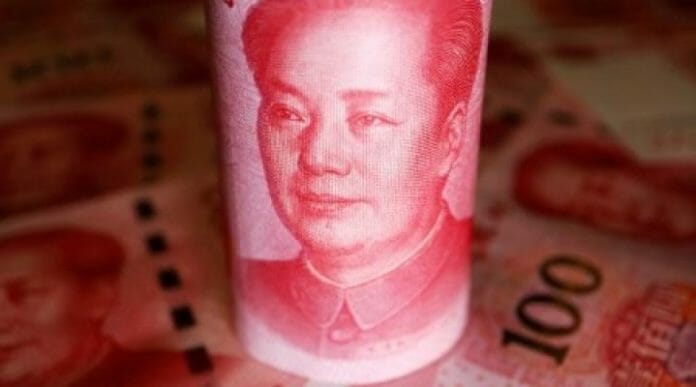The yuan has sunk to its lowest level against the dollar in almost 16 years as efforts by the People’s Bank of China to curb its slide continued to be outweighed by downward pressure in currency markets.
The Chinese currency touched 7.3294 against the dollar at one point Thursday, a level last seen in December 2007. It dipped even further during trading hours Friday, depreciating as far as 7.3510 to the greenback.
The widening gap in interest rates between China and the U.S. has been the main factor driving the slide, as the more-attractive returns offered by Treasurys lure money away from the Chinese market. The spread between American and Chinese 10-year government bonds stands at about 1.57 percentage point, its widest on a monthly basis since January 2007.
Along with Japan, China is one of the few major economies pursuing a loose monetary policy. Worsening economic sentiment has led the PBOC toward looser monetary policy, including cuts to key policy loan rates. With Europe and the U.S. looking increasingly likely to keep rates high next year, conditions are bearish for its currency.
China’s shrinking trade surplus also plays a role, as trading companies sell less foreign currency to buy yuan. The surplus fell for a fourth straight month in August amid a slump in exports.
Wang Tao, chief China economist at UBS, expects exports to decline 5% for the full year, and has revised her year-end yuan forecast to 7.15 to the dollar from 6.95.
While a soft yuan boosts profit margins for exporters, it puts more of a burden on companies with large dollar-denominated debts. Struggling developer China Evergrande Group booked 4.14 billion yuan ($564 million) in exchange losses for the first half of this year.
Speculation of further depreciation could accelerate the flow of Chinese money overseas. The PBOC is focusing its currency policy on keeping the yuan “basically stable at a reasonable and equilibrium level.”
The central bank is set to cut the foreign exchange reserve requirement ratio for commercial banks to 4% from 6% next week. It also looks to avoid excessive currency swings via the daily reference rate — the fix set each morning by the PBOC that determines the yuan’s trading range in the Shanghai market. The currency can move only 2% above or below this level on a given day.
But the bank remains leery of draining its foreign-exchange reserves with direct intervention in the currency market.
Market players are keeping an eye on the effects of steps announced late last month by the government to shore up the sagging housing market, including lower down-payment requirements and cuts to mortgage rates for purchases of second homes.
He Ning, an analyst at Kaiyuan Securities, expects the support measures to boost full-year housing sales by 5% this year in floor-area terms. Sales fell 4.3% on the year in the first seven months of 2023, according to official data.
But worries about long-term population decline make this slump different from past downturns. The Chinese economy will stabilize only after it stabilizes the real estate industry, its largest sector, said Ting Lu, chief China economist at Nomura. – Nikkei Asia









